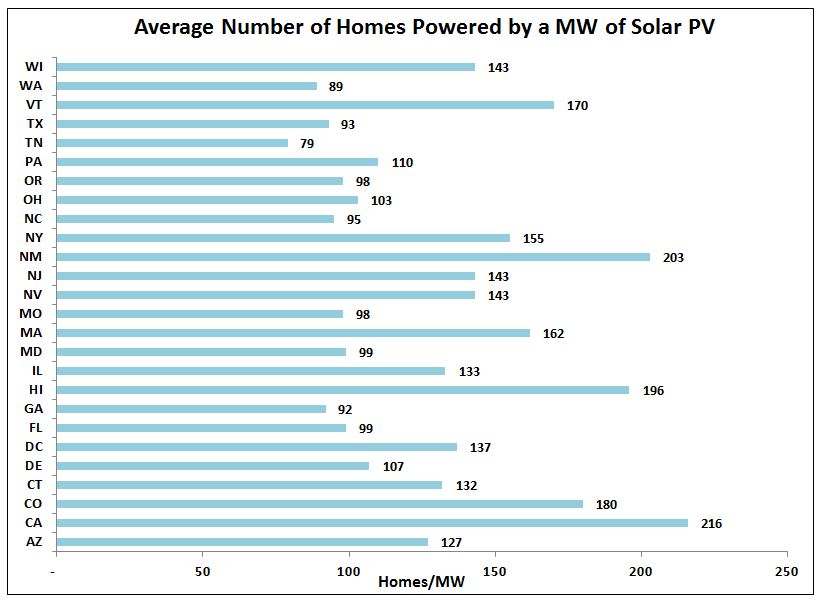Philadelphia Solar Power Growth Lagging Other Cities

Shutterstock.com
Three days after Earth Day 2011, Mayor Nutter celebrated the installation of the first solar power system owned by the City of Philadelphia. The photovoltaic system at a Water Department control plant, with the capacity to produce 250 kilowatts — enough to power 28 homes — marked an symbolic early step toward the City’s goal of switching 20 percent of the total citywide electrical use to sources powered by sustainable alternatives like solar. But the city remains far from achieving that mark today, and has in fact plateaued over the past year when it comes to solar installations.
The annual “Shining Cities” report by Environment America is out and Philadelphia solar power capacity remained unchanged from the year before. At the end of 2014, the city had 9 megawatts of solar capacity — exactly the same amount in the prior year’s report — and we ranked 41st out of 65 cities in per-capita power, sliding back from 35th in 2013. That comparative regression can be witnessed by the leaps made in the nearby city of Newark — which installed 9 megawatts in 2014 alone, the equivalent of our entire grid’s capacity.
To be fair, not every city has been expanding like gangbusters. For example, Wilmington, considered a national leader (a “Solar Star,” the highest category in the report) did not add any megawatts in 2014 either. But the impetus to expand solar power in Philly is particularly acute, given that the city is expected to be very susceptible to climate change. Researchers at Johns Hopkins recently ranked Philly second out of 27 coastal cities for increased potential of power outages in the coming years. Investing in solar power is a safe hedge against threats to the electric grid, because photovoltaic batteries are one way to power buildings during blackouts. Solar can also help reduce air pollution and control against volatile gas prices. According to the “Shining Cities” report, solar produces 96 percent less global warming pollutants than coal-fired power plants.
All reasons why last year City Council unanimously passed a resolution setting the goal of achieving 20,000 solar roofs by the year 2025. The sponsor of that resolution, Councilwoman Blondell Reynolds Brown, had this much to say about its importance:
“To the best of our ability, we must leave a cleaner, more sustainable planet for future generations. That requires setting ambitious goals, like producing enough solar energy to power 20,000 homes by 2025, and committing to do the necessary follow through. I look forward to working with a diverse group of stakeholders to make this goal a reality”
It’s another ambitious goal, on top of those already outlined in Mayor Nutter’s Greenworks initiative, especially in light of the city’s relatively weak performance in solar to date.
Part of the problem is the local weather, which makes solar less attractive here than in sunnier climates. The power of one solar megawatt in Pennsylvania can reach over 100 homes, according to one estimate by an industry association, while West Coast and plains states — like California and New Mexico — get almost double the power out of each megawatt that’s installed. That means we’re presently equipped with enough solar installations to power roughly 1,000 homes. The out-of-pocket cost of equipping a home with solar paneling is about $11,000 in Philadelphia.
Despite the weak solar expansion performance in 2014, Philadelphia continues to create conditions for long-term growth. Over the past few years, the city has cut back on permitting fees and red tape in the application process for solar installations. Last fall, the Clean Air Council and Sustainable Business Network teamed up to launch Solar Philly, a campaign to reduce costs in solar installation and provide workshops for homeowners about the costs and benefits of going solar. Plus, there are symbols of the future like the Linc’s 11,000 solar panels and the advanced battery storage for renewable energy at the Navy Yard.
A recent study out of Stanford suggested that solar installations in cities can be even more sustainable than those in more rural areas, because proximity to the grid reduces energy loss in transmitting the renewable power. Philadelphia won’t be one of the first urban photovoltaic hubs, but the city is putting solar-friendly policies in place so that it won’t miss out entirely.

